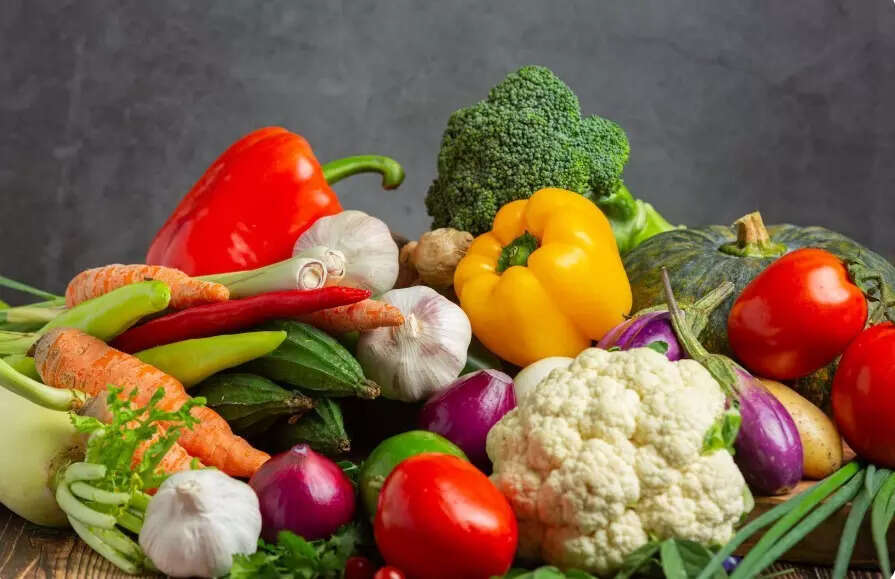Best Ways To Cook Vegetables Without Losing Nutrients
Vegetables are packed with vitamins, minerals, antioxidants, and fibre, but the way you cook them can decide how much goodness actually reaches your plate. Some cooking methods help retain nutrients, while others unintentionally drain them away. If you want every bite to be healthy, colourful, and flavourful, here are the best ways to cook vegetables without losing nutrients.
Cooking vegetables is not just about taste, it’s about nutrition too. By choosing smarter techniques like steaming, stir-frying, roasting, or microwaving, you can enjoy flavour-packed meals without losing essential vitamins and minerals. Small changes in the kitchen can make a big difference to your health.
Disclaimer: This article is for general information purposes only and should not replace professional dietary or medical advice. Always consult a certified nutritionist or healthcare provider for personalised recommendations.

1. Steam for Maximum Nutrition
Steaming is one of the gentlest cooking methods. Since veggies don’t sit in water, their vitamins, especially vitamin C and B vitamins, don’t leach out. Steamed broccoli, carrots, spinach, and beans retain their crunch, colour, and nutrition. It’s quick, clean, and perfect for those who want health without compromising taste.2. Stir-Fry for Quick and Healthy Meals
A fast stir-fry on high heat keeps vegetables vibrant while locking in nutrients. Just a little oil and a hot pan can work wonders. Because the cooking time is minimal, minerals and vitamins stay intact. Add garlic, ginger, or herbs for extra flavour without extra calories.3. Sauté with Healthy Oils
Sautéing in small amounts of olive oil, coconut oil, or mustard oil not only enhances flavour but also helps the body absorb fat-soluble vitamins like A, D, E, and K. Use low to medium heat to prevent nutrient breakdown and avoid overcooking.4. Microwave: The Underrated Healthy Option
Microwaving uses very little water and short cooking time, making it one of the best ways to preserve nutrients. Just place chopped veggies in a microwave, safe bowl, cover loosely, and cook for a few minutes. It’s fast, convenient, and nutrient-friendly.5. Roast for Rich Flavour Without Nutrient Loss
Roasting at moderate temperatures brings out natural sweetness while keeping most nutrients intact. Vegetables like carrots, sweet potatoes, zucchini, and cauliflower caramelize beautifully. Just avoid very high temperatures to prevent losing heat-sensitive vitamins.6. Blanch and Shock
Blanching involves briefly cooking vegetables in boiling water and instantly transferring them to ice water. This technique keeps the colour bright and the texture crisp. Since the cooking time is short, nutrient loss is minimal, perfect for salads and meal prep.7. Grill for Smoky Goodness
Grilling adds smoky flavour while preserving fibre and most minerals. Brush lightly with oil to avoid sticking, but be careful not to char the vegetables too much, as it can reduce nutritional value.8. Don’t Overcook - The Golden Rule
No matter which method you choose, overcooking is the real culprit behind nutrient loss. Keep veggies slightly firm, vibrant, and juicy. A little crunch means more vitamins, better texture, and richer taste.9. Cut Right to Keep More Nutrients
Chop vegetables into larger pieces when possible. Smaller pieces have more surface area, increasing vitamin loss during cooking. Also, cutting just before cooking prevents oxidation.10. Use the Right Amount of Water
When boiling is necessary, use minimal water and reserve the leftover broth, it’s full of nutrients. You can add it to soups, curries, dals, or gravies so nothing goes to waste.Cooking vegetables is not just about taste, it’s about nutrition too. By choosing smarter techniques like steaming, stir-frying, roasting, or microwaving, you can enjoy flavour-packed meals without losing essential vitamins and minerals. Small changes in the kitchen can make a big difference to your health.
Disclaimer: This article is for general information purposes only and should not replace professional dietary or medical advice. Always consult a certified nutritionist or healthcare provider for personalised recommendations.
Next Story